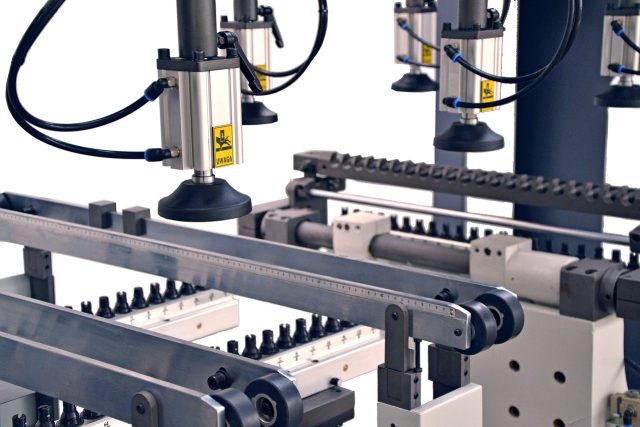Pneumatics and hydraulics. Both systems are pivotal in driving machinery and processes across various industries, yet they operate on distinct principles and offer unique advantages. This essential guide delves into the heart of pneumatics and hydraulics, unraveling their intricacies to provide a clear, comprehensive understanding of their differences and applications.
Whether you’re an engineer, a student, or simply a curious mind, grasping the nuances between these two systems is crucial for making informed decisions in fields ranging from manufacturing to robotics. Pneumatics, known for its use of compressed air, offers simplicity and safety, while hydraulics, powered by pressurized fluids, stands out for its unparalleled power and control. Each system has its realm of expertise, and knowing which to choose can significantly impact the efficiency and success of your projects.
Join us as we explore the fascinating world of pneumatics and hydraulics. We’ll compare their mechanisms, discuss their pros and cons, and provide insights into their practical applications. By the end of this guide, you’ll have a solid foundation in understanding these vital systems, empowering you to make more informed decisions in your professional endeavors.
What is Pneumatics?
Pneumatics is a branch of technology that deals with the use of air pressure to create movement or some form of mechanical force. It’s like using the power of air to do work. Imagine how a balloon flies away when you let it go after inflating it. That’s a simple example of air pressure in action.
In pneumatics, air is usually compressed, which means it’s squeezed into a smaller space. This compressed air is then used in various machines and systems to move parts or to control the machine. It’s a bit like how you use a pump to fill air into a bicycle tire. The air inside the tire is under pressure, and this pressure can be used to do things.
Here are some key points about pneumatics:
- Uses Air: Pneumatics uses air, which is safe and easy to find everywhere.
- Simple and Safe: Because it uses air, it’s generally simpler and safer than other systems like hydraulics, which use liquids.
- Common Uses: You can find pneumatics in many places. For example, it’s used in tools like air hammers, in vehicles for brakes and suspension systems, and in automation systems for factories where it helps to move, pick, and place things.
So, pneumatics is all about using air to make things move or work. It’s a useful and safe way to power different kinds of machines and tools.
What is Hydraulics?
Hydraulics is like magic for machines. It’s all about using the power of liquids to make things move and work. Imagine pushing a button and watching a heavy door swing open effortlessly. That’s the magic of hydraulics at play. In simple terms, hydraulics is the science of using fluids to transmit force and make things easier to operate. Whether it’s a car’s brakes or heavy construction equipment, hydraulics is what makes them tick. So, the next time you see something big and powerful in action, remember that behind the scenes, it might just be hydraulics making it all happen.
Looking for Hydraulic Repair Services in Chilliwack? Call Delange’s Industries for an instant solution.
Key Differences Between Pneumatics and Hydraulics
When it comes to powering machinery and equipment, two common methods stand out: pneumatics and hydraulics. These two systems are at the heart of many industrial and mechanical applications, but they operate on different principles and have distinct advantages and disadvantages. In this article, we’ll explore the key differences between pneumatics and hydraulics to help you understand when and where each system is most suitable.
1. Working Fluid
The most fundamental difference between pneumatics and hydraulics lies in the working fluid they use. Pneumatic systems rely on compressed air, while hydraulic systems use pressurized fluid, typically oil. This distinction impacts their performance and applications.
2. Power Density
Hydraulic systems are known for their higher power density compared to pneumatics. The incompressibility of fluids allows hydraulics to generate more force, making them ideal for heavy-duty applications like construction equipment and automotive brakes. Pneumatics, on the other hand, provide less power but are still suitable for various tasks.
3. Control Precision
Pneumatic systems offer precise control and are often used in applications where accuracy is crucial, such as in the semiconductor industry. Hydraulics, while powerful, may not provide the same level of precision due to the compressibility of air in pneumatic systems.
4. Maintenance and Environmental Factors
Maintenance considerations differ between the two systems. Hydraulic systems, known for their power and precision, require meticulous Hydraulic Maintenance due to the sensitivity of hydraulic fluids to contamination. Pneumatics, using clean and dry air, are generally less sensitive to environmental factors. This makes pneumatics a better choice in dusty or dirty environments.
5. Cost and Efficiency
Pneumatic systems are often more cost-effective to install and operate, making them a popular choice for smaller-scale applications. Hydraulics tend to be more expensive due to the need for precision components and hydraulic fluid. However, they can be more energy-efficient in certain situations.
6. Size and Weight
Pneumatic components are typically smaller and lighter than their hydraulic counterparts. This makes pneumatics a suitable choice when space and weight are critical factors, such as in mobile applications like aircraft landing gear.
7. Speed of Operation
Pneumatic systems are known for their fast response times, making them ideal for tasks that require rapid movement, such as in robotics. Hydraulics, while powerful, may be slower in comparison.
The choice between pneumatics and hydraulics depends on the specific needs of your application. Pneumatic systems are precise, cost-effective, and suitable for many applications. Hydraulics offer greater power and can handle heavy loads but come with higher maintenance costs. Understanding these key differences will help you make an informed decision when selecting the right system for your machinery or equipment.
Advantages of Pneumatics, Disadvantages of Hydraulics
Advantages of Hydraulics:
Hydraulic systems, which utilize pressurized fluids, offer several advantages in various industrial and mechanical applications:
1. High Power Density:
Hydraulics are known for their high power density, making them ideal for heavy-duty applications where substantial force is required, such as in construction equipment and automotive brakes.
2. Precise Control:
Hydraulic systems can provide precise control over the movement and force, making them suitable for tasks that demand accuracy, like in heavy machinery.
3. Reliability and Durability:
Hydraulic components are robust and durable, with a long operational lifespan when properly maintained.
4. Variable Speed and Force:
Hydraulic systems can easily vary the speed and force of their operation, making them versatile for different applications.
5. Wide Temperature Range:
Hydraulics can operate effectively in a wide temperature range, making them suitable for extreme conditions.
Disadvantages of Hydraulics:
However, hydraulic systems come with their own set of disadvantages:
1. Environmental Concerns:
Hydraulic systems use hydraulic fluid, which can be harmful to the environment if it leaks or is not managed properly. Fluid spills and leaks can lead to pollution.
2. Maintenance Intensive:
Hydraulic systems require regular maintenance to ensure the cleanliness and proper functioning of the hydraulic fluid. Contaminated fluid can lead to component failures.
3. Higher Costs:
The cost of hydraulic components and hydraulic fluid can be higher than alternatives like pneumatics, making them less cost-effective for some applications.
4. Size and Weight:
Hydraulic components are typically larger and heavier than pneumatic ones, which can be a drawback in applications where space and weight are critical factors.
Read also: The Role of Hydraulic Cylinder Seals in System Integrity and Performance
Advantages of Pneumatics:
Pneumatic systems, powered by compressed air, offer their own set of advantages:
1. Clean and Environmentally Friendly:
Pneumatic systems use clean and dry air as their working fluid, making them environmentally friendly and suitable for applications where contamination is a concern.
2. Cost-Effective:
Pneumatic components are generally more affordable than hydraulic ones, making pneumatics a budget-friendly choice for many industries.
3. Easy Installation and Maintenance:
Pneumatic systems are relatively simple to install and maintain. They do not require the same level of maintenance as hydraulic systems, which depend on hydraulic fluids.
4. Speed and Response:
Pneumatic systems are known for their rapid response times, making them ideal for tasks that demand quick movements or adjustments, such as in robotics.
Disadvantages of Pneumatics:
However, pneumatics also have their own disadvantages:
1. Limited Power:
Pneumatic systems provide less power compared to hydraulics, which can limit their suitability for heavy-duty applications.
2. Precision Control Challenges:
Achieving precise control in pneumatic systems can be more challenging compared to hydraulics due to the compressibility of air.
3. Noise:
Pneumatic systems can be noisy, which may not be suitable for applications where noise is a concern.
Both hydraulics and pneumatics offer unique advantages and disadvantages, catering to a wide range of industrial needs. Your choice should be guided by the specific requirements of your application. Whether you prioritize power and precision with hydraulics or opt for cost-effective and environmentally friendly pneumatics, make an informed decision to optimize your machinery. If you need expert guidance or assistance in choosing the right hydraulics system for your needs, or if you require hydraulic repair services in Chilliwack, simply call Delanges Industries.



















